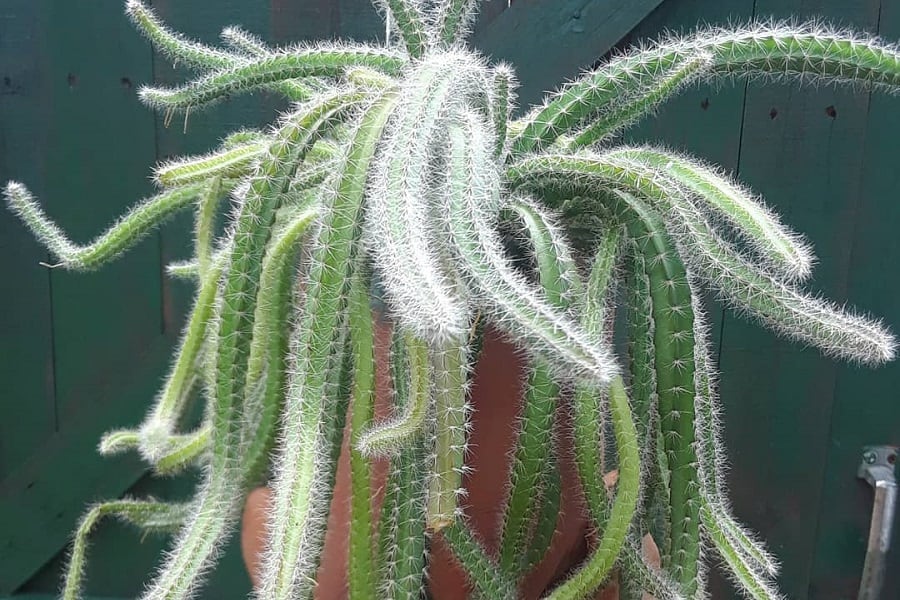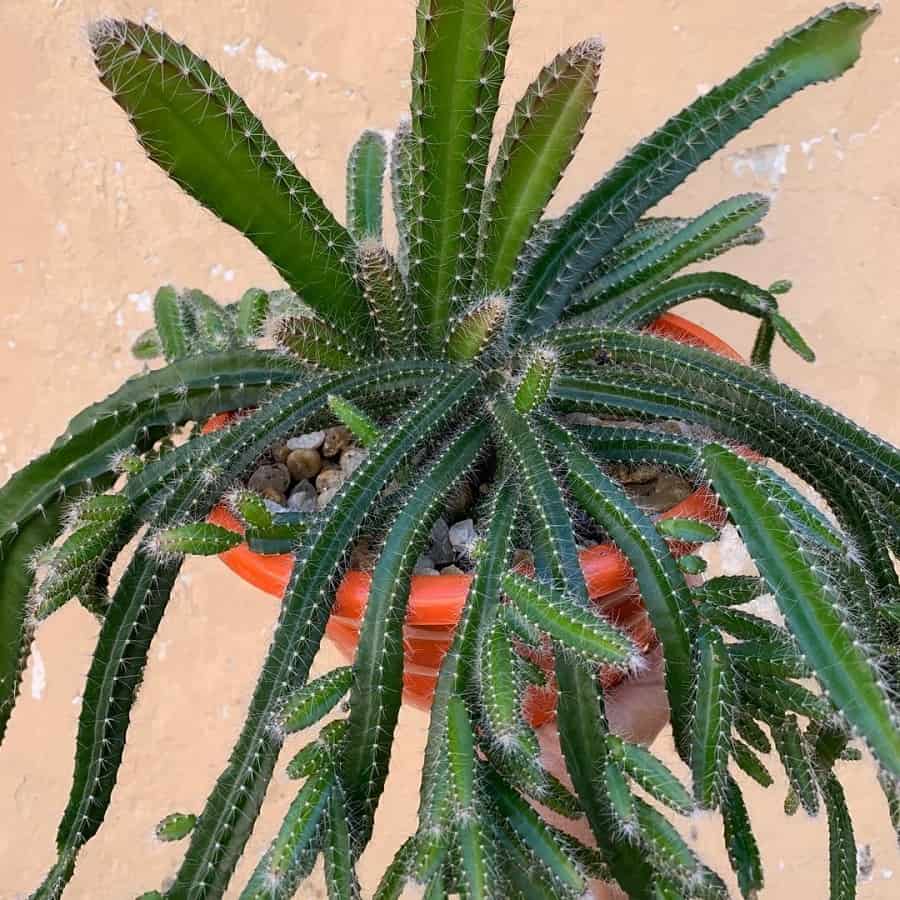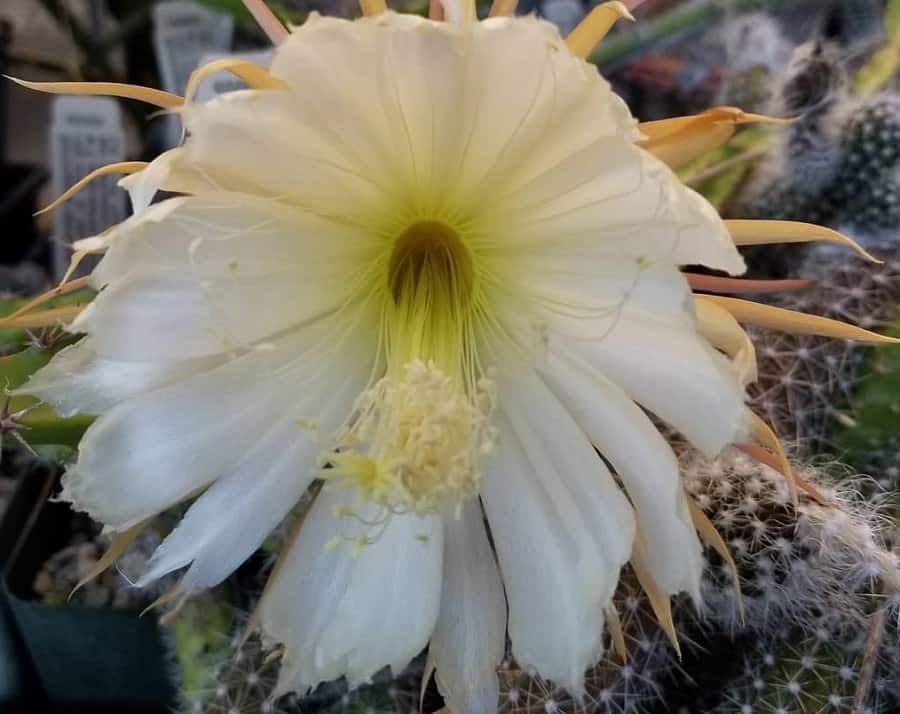Selenicereus validus: Characteristics and Care
Have you seen those bizarre, tentacle-like cacti that seem to be taking over social media? With their thick, hanging stems covered in wicked spines, they look like something straight out of a sci-fi horror movie. But don’t be afraid – these strange plants are just the incredibly unique Selenicereus validus, also known as the “moonlight cactus.” And trust us, you’re going to want one for your own collection after reading this!

Contents
About Selenicereus validus
Native to parts of South, Central, and North America as well as the Caribbean, Selenicereus validus is a night-blooming cactus from the Cactaceae family. A single stem initially grows upright before branching off into multiple thick, cylindrical segments that hang downwards, covered in a coat of wicked white spines. In summer, it produces stunning white and gold flowers that only open at night, living up to its “moonlight” name.
These alien-like plants have caused a social media frenzy with their bizarre, tentacle-esque appearance. But despite their freak factor, Selenicereus validus is actually easy to care for if you know what it needs. Let’s dive into the tips for keeping this funky cactus thriving!
Related Post:
31 Types of Selenicereus With Pictures
Selenicereus validus Care Guide
Light Needs
While they look like desert dwellers, these rainforest cacti don’t love intense, direct sunlight. Aim for bright, indirect light like from an east or west-facing window. If growing indoors, place under a grow light for 12-14 hours per day, keeping the light 12-18 inches away from the plant.
Water
These cacti are accustomed to rainforest humidity levels but don’t require frequent watering. Only water when the soil is completely dry, giving the plant a deep soak until water seeps from the drainage hole. In winter, cut back to watering every 4-6 weeks.
Soil
Drainage is key for Selenicereus validus. Use a well-draining cactus soil mix, or make your own by combining 2 parts potting soil, 2 parts coarse sand or perlite, and 1 part small gravel or crushed granite. The chunky texture allows excess moisture to escape.
Fertilizer
Feed your moonlight cactus monthly in spring and summer with a balanced, water-soluble cactus fertilizer diluted to half strength. Avoid high nitrogen fertilizers which promote lush, thirsty growth.
Temperature
Selenicereus validus thrives in average household temperatures of 65°F-80°F during the day, and 60°F-65°F at night. Protect from cold drafts and freezing temps.

How To Propagate Selenicereus validus
Easily multiply your plant collection by propagating Selenicereus validus from stem cuttings:
- Take 6-8 inch cuttings from healthy stems, allowing the cut ends to callus over for 5-7 days before planting
- Fill a well-draining pot with cactus/succulent soil
- Stick the cuttings into the soil vertically, gently tamping the soil around the base
- Place in a warm, bright spot and wait – new growth signals the cuttings have rooted!
Whether you’re a succulent fanatic or simply love bizarre botanical wonders, the freakishly fascinating Selenicereus validus is a must-have for your collection. With their alien-like tentacles and exquisite night blooms, these low-maintenance cacti are sure to earn you hordes of envious likes on social media!

Frequently Asked Questions
Does Selenicereus validus like humidity?
Yes, these rainforest cacti thrive in higher humidity environments. Allow the soil to stay slightly dampened between waterings and mist the plant occasionally. Aim for 50-60% humidity levels if possible.
Does Selenicereus validus like the sun?
Selenicereus validus prefers bright, filtered light or morning/evening sun. Direct afternoon rays can scorch the hanging stems. Indoors, situate in an east or west-facing window or use a grow light.
How long does it take for Selenicereus validus to bloom?
If propagating from a cutting, it can take 2-3 years before the plant is mature enough to bloom. Once established, the moonlight cactus will flower annually in late spring to early summer, with the fragrant white and yellow blooms opening at night.

